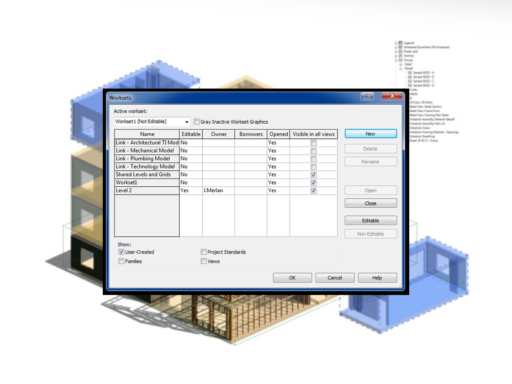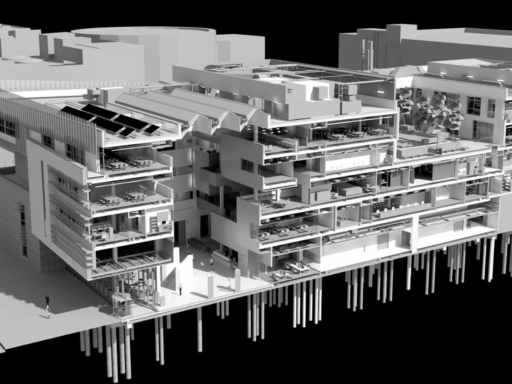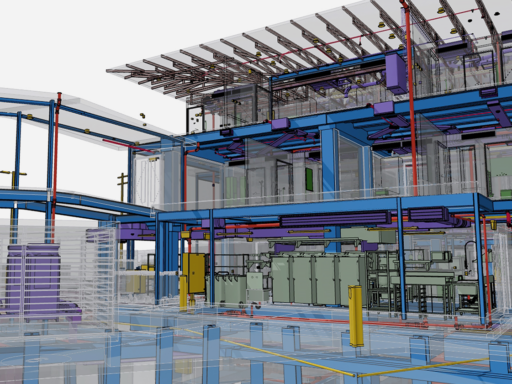Introduction
Are you looking to streamline your construction processes? Explore the world of automation in the construction industry. Discover how technological advancements can simplify complex tasks.
“Only through the combination of technological innovation with an open and proactive mindset can we drive progress and excellence in the construction industry.” – Carola Bretz, BIM Architect
In today’s increasingly digitalized world, the construction industry is undergoing a digital transformation. This transformation is driven by the growing adoption of Building Information Modeling (BIM) and the incorporation of automation in construction processes.
The Power of Automation in BIM
Embracing BIM automation can revolutionize your workflow and project delivery.
- Increase efficiency and accuracy in your processes.
- Streamline repetitive tasks and free up time for more critical aspects.
- Stay ahead of the curve by adopting the latest automation tools.
- Enhanced collaboration and communication among project stakeholders.
- Improved decision-making processes with real-time data insights.
- Achieve cost savings and faster project completion through automation integration.
Automation in BIM involves the use of scripts to automatically perform repetitive and routinary tasks. By automating these, time and money can be saved. For simple projects, manual modifications and tasks are manageable. However, for complex and large-scale projects, they can be a headache for the team and a waste of money that could be saved.
The adoption of new technologies, such as automation, is crucial for the survival and progress of the construction industry. It represents a new paradigm within construction and architecture. The adoption of these tools create increasingly agile processes that allow for new rules in designing and creating projects.
Automation not only improves efficiency in the design and construction process but also frees up professionals’ time and resources for more creative and strategic tasks. By automating repetitive and routine tasks, professionals can focus on more complex and innovative aspects of their work. This combination of creativity and process efficiency is leading to the development of new types of architecture and construction.
“The professionals who resist change run the risk of falling behind in an increasingly competitive market, which is experiencing substantial improvements in terms of the new tools that can be used.” – Carola Bretz, BIM Architect
Challenges and Benefits of Automation in BIM
When considering BIM Automation, it’s crucial to understand its importance in streamlining processes. By utilizing the right tools, you can enhance efficiency and accuracy in your projects.
- Reduce human errors with automation tools.
- Ensure consistency in the BIM model.
- Minimize costly mistakes during construction phases.
To fully leverage it’s benefits, firms must address the challenges it presents. Implementation costs and staff training are initial hurdles that need to be overcome.
- Initial hurdles include implementation costs.
- Staff training is essential for seamless collaboration.
- Developing standardized processes is crucial for data management.
Implementing automation may require significant investments in technology and staff training. However, those who proactively adopt automation can gain a competitive advantage over other companies and provide added value to their clients. It is important to note that automation should not be limited to the creation of digital twins. Process improvements should be implemented at all stages of the project.
To fully harness the benefits of these technologies, it is crucial to be open and committed to continuous learning. By combining technological innovation with an open and proactive mindset, we can drive progress and excellence in the construction industry.
Conclusion
Automation in BIM is revolutionizing the construction industry by simplifying and streamlining tasks, saving time and money, and allowing professionals to focus on more creative and strategic aspects of their work. The adoption of automation and new technologies is essential for the survival and progress of the industry.
It is crucial to embrace new technologies, invest in training and professional development, and stay up to date with the latest trends to drive innovation and personal growth in this dynamic field.
In a world where construction projects are becoming increasingly complex, automation is the key to efficiency and success. By leveraging it’s power, professionals can create smarter buildings and structures, improve productivity, and deliver high-quality projects. It’s time to embrace automation and unlock the full potential of the construction industry.






